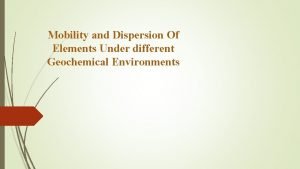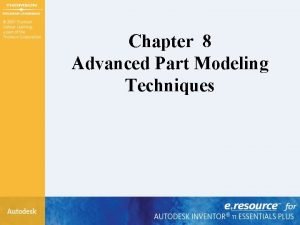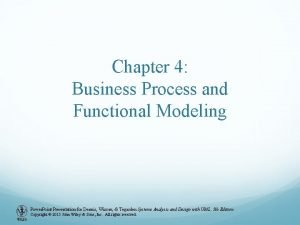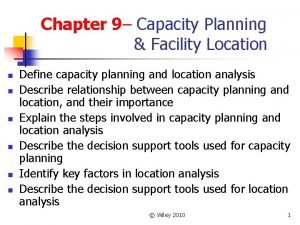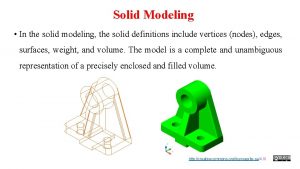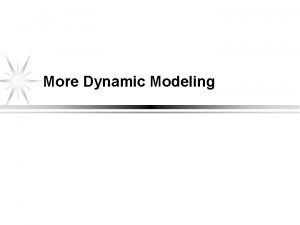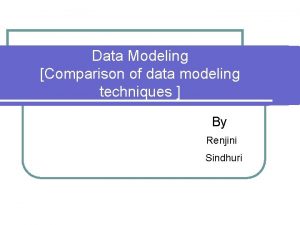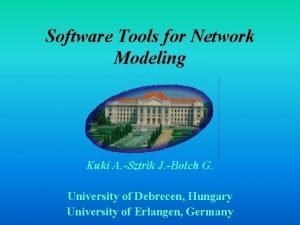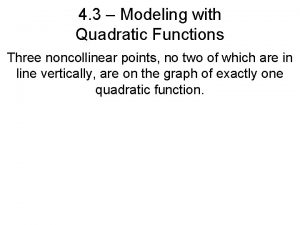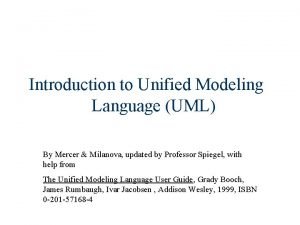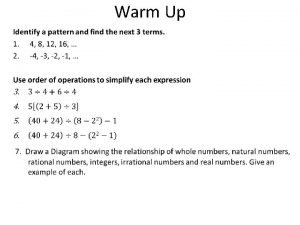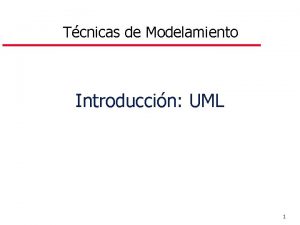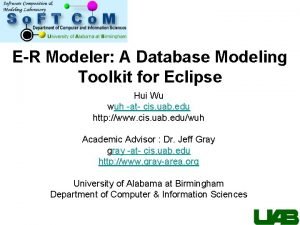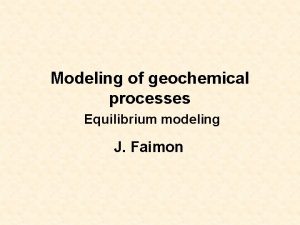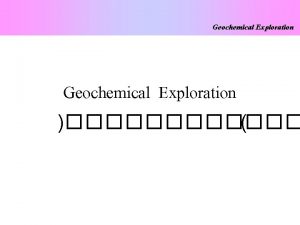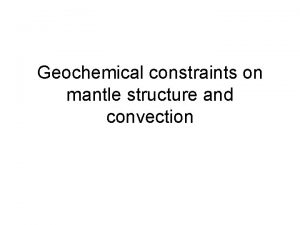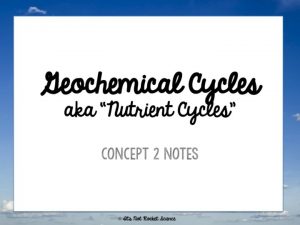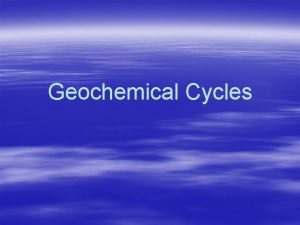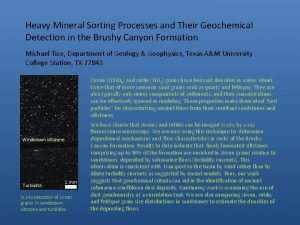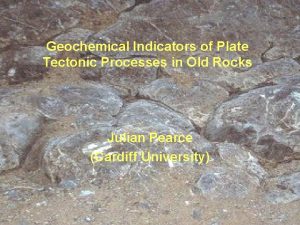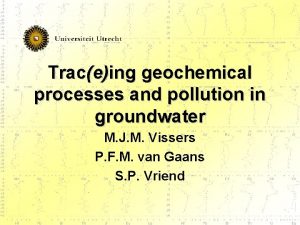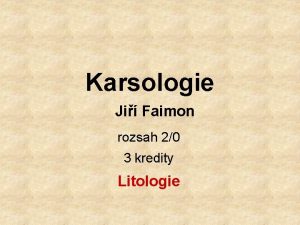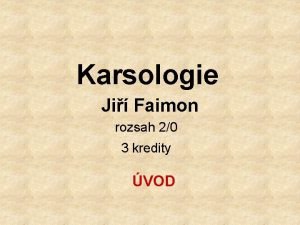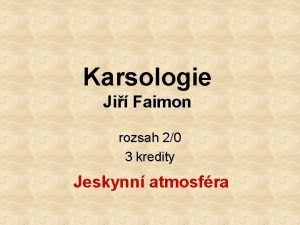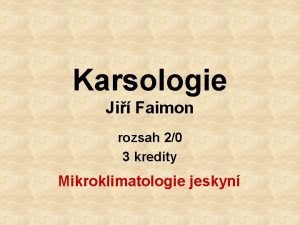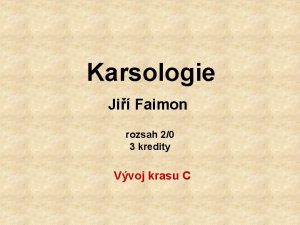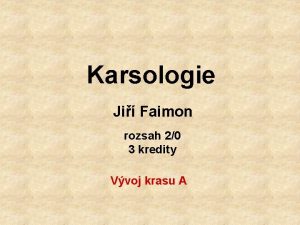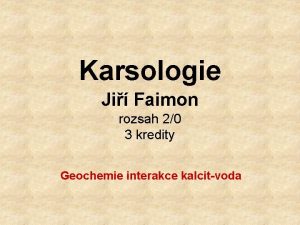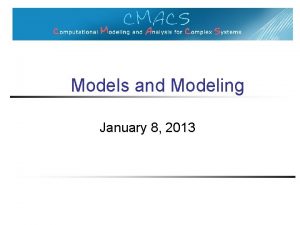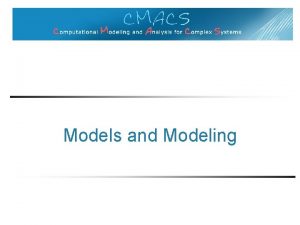Modeling of geochemical processes ReactiveTransport Models J Faimon



















- Slides: 19

Modeling of geochemical processes Reactive-Transport Models J. Faimon

Modeling of geochemical processes Dynamic models Convection Discretization: Taylor expansion totally:

Modeling of geochemical processes Dynamic models Diffusion Mass flux The flux ji into the volume element V. The flux ji relates to an increment of content mi in the volume element V: Diffusion flux The flux ji. D [mol m-2 s-1] through area S [m 2] relates to a concentration gradient (c 1>c 2) along a diffusional path x (one-dimensional diffusion along axis x). [mol m-2 s-1] [mol s-1] Diffusion coefficient D [m 2 s-1]

Modeling of geochemical processes Dynamic models The increment of concentration dci in the volume element d. V in time dt equals to gradient of flux ji. D in direction x: If the input and output fluxes /ji 1 D a ji 2 D/ were equal, the concentration in the volume element would not increase The substitution for the flux gives Units control:

Modeling of geochemical processes Dynamic models Discretization Taylor expansion first order equation: second order equation: adding both equations gives

Modeling of geochemical processes Dynamic models The complete diffusion equation is: Explicit solution: If θ = 0, then explicit scheme Defining a parameter r (mixing factor) yields The Explicit Solution is stable for r < 0, 5 or r < 1/3

Modeling of geochemical processes Dynamic models Example - diffusion Δt = 0. 05 D = 0. 15 [cm 2 hod-1] (Δx)2 = 0. 04 r = 0. 19 t/cm -5 -4. 8 … -0. 4 -0. 2 0. 4 … 4. 8 5 0 0. 00 E+00 … 0. 00 E+00 1. 00 E+00 0. 00 E+00 … 0. 00 E+00 0. 05 0. 00 E+00 … 0. 00 E+00 1. 88 E-01 6. 25 E-01 1. 88 E-01 0. 00 E+00 … 0. 00 E+00 0. 1 0. 00 E+00 … 3. 52 E-02 2. 34 E-01 4. 61 E-01 2. 34 E-01 3. 52 E-02 … 0. 00 E+00 … … … 4. 8 8. 41 E-06 2. 06 E-05 … 6. 29 E-02 6. 55 E-02 6. 65 E-02 6. 55 E-02 6. 29 E-02 … 2. 06 E-05 8. 41 E-06 4. 85 9. 12 E-06 2. 22 E-05 … 6. 26 E-02 6. 52 E-02 6. 61 E-02 6. 52 E-02 6. 26 E-02 … 2. 22 E-05 9. 12 E-06 4. 9 9. 87 E-06 2. 40 E-05 … 6. 23 E-02 6. 49 E-02 6. 58 E-02 6. 49 E-02 6. 23 E-02 … 2. 40 E-05 9. 87 E-06 4. 95 1. 07 E-05 2. 58 E-05 … 6. 20 E-02 6. 46 E-02 6. 54 E-02 6. 46 E-02 6. 20 E-02 … 2. 58 E-05 1. 07 E-05 5 1. 15 E-05 2. 77 E-05 … 6. 17 E-02 6. 43 E-02 6. 51 E-02 6. 43 E-02 6. 17 E-02 … 2. 77 E-05 1. 15 E-05

Modeling of geochemical processes Dynamic models

Modeling of geochemical processes Dynamic models

Modeling of geochemical processes Dynamic models Combining the processes The change in concentration due to (1) transport, (2) dispersion (diffusion) and (3) reaction transport dispersion reaction

Modeling of geochemical processes Dynamic models Diffusion and reaction Discretization:

Modeling of geochemical processes Dynamic models Diffusion of aqueous Fe through alkaline solution in pore environment Precipitation of Fe-hydroxide far from equilibrium at constant concentration of OH- ions p. H = 7. 9 r. Fe = 0. 32 [OH] = 8. 00 E-07 k 1 = 1. 00 E+18 k 2 = 1. 00 E-20 K = 1. 00 E+38 DFe = 1, 5. 10 -6 cm 2 s-1 = 1, 3. 10 -1 cm 2 den-1 [Fe 3+]t=0 = 1. 10 -2 mol l-1

Modeling of geochemical processes Dynamic models t/x -5. 0 -4. 8 … -0. 4 -0. 2 0. 0 0. 2 0. 4 … 4. 8 5. 0 0. 00 E+00 … 0. 00 E+00 1. 00 E-02 0. 00 E+00 … 0. 00 E+00 0. 1 0. 00 E+00 … 0. 00 E+00 3. 24 E-03 3. 01 E-03 3. 24 E-03 0. 00 E+00 … 0. 00 E+00 0. 2 0. 00 E+00 … 1. 05 E-03 1. 95 E-03 3. 00 E-03 1. 95 E-03 1. 05 E-03 … 0. 00 E+00 0. 3 0. 00 E+00 … 9. 47 E-04 1. 90 E-03 2. 17 E-03 1. 90 E-03 9. 47 E-04 … 0. 00 E+00 … … … … … … 4. 8 2. 30 E-09 6. 11 E-09 … 5. 24 E-05 5. 49 E-05 5. 57 E-05 5. 49 E-05 5. 24 E-05 … 6. 11 E-09 2. 30 E-09 4. 9 2. 67 E-09 7. 01 E-09 … 4. 93 E-05 5. 15 E-05 5. 23 E-05 5. 15 E-05 4. 93 E-05 … 7. 01 E-09 2. 67 E-09 5. 0 3. 07 E-09 7. 95 E-09 … 4. 64 E-05 4. 84 E-05 4. 91 E-05 4. 84 E-05 4. 64 E-05 … 7. 95 E-09 3. 07 E-09

Modeling of geochemical processes Dynamic models

Modeling of geochemical processes Dynamic models The analytical solution The Gaussian function where σ is referred to as the spread or standard deviation and A is a constant The function can be normalized yielding the normalized Gaussian: The Error function The relation between the normalized Gaussian distribution and the error function equals: A series approximation for small value of x is given by:

Modeling of geochemical processes Dynamic models An approximate expression for large values of x can be obtained from: The Complementary Error function The complementary error function equals one minus the error function yielding: which, combined with the series expansion of the error function listed above, provides approximate expressions for small and large values of x:

Modeling of geochemical processes Dynamic models Numeric solution of diffusion equation The Method of Finite Differential Creation of a uniform net by discretization of the variables x and t • Let Δx and Δt are discrete steps on variables x and t, respectively. The variables x and t are defined as x = i Δx and t = j Δt, respectively. • The index i or j relates to a step number. i and j are 0, 1, 2. . . n! • The concentration relates to a point in the two-dimensional net with coordinates x = iΔx a t = jΔt. Let δx is a central differential operator (in the point j) : Second order differential is

Modeling of geochemical processes Dynamic models Differentiation with respect x (in the point j) can be replaced by finite difference: and Central differential operator δt (for time) : t is in the middle of the interval t + Δt: Time derivation in point t = j + 1/2: Druhá derivace podle x pak může být nahrazena lineární kombinací konečných diferencí druhého řádu v bodech t a t + Dx (čili v bodech j a j + 1!) :

Modeling of geochemical processes Dynamic models The complete diffusion equation is: where θ is a parameter on the interval [0, 1]. Explicit solution: If θ = 0, then explicit scheme Defining a parameter r (mixing factor, mixf) yields The Explicit Solution is stable for r < 0, 5 or r < 1/3
 Practice geochemical cycles answer key
Practice geochemical cycles answer key Primary dispersion
Primary dispersion Helen erickson biography
Helen erickson biography Relational vs dimensional data modeling
Relational vs dimensional data modeling Concurrent in os
Concurrent in os Difference between modal and semi modal
Difference between modal and semi modal Advanced evolution chapter 8
Advanced evolution chapter 8 Business process and functional modeling
Business process and functional modeling Health care risk adjustment and predictive modeling
Health care risk adjustment and predictive modeling Explain the decision tree modeling for capacity expansion
Explain the decision tree modeling for capacity expansion Solid
Solid Modeling
Modeling Dfd fragment
Dfd fragment Idefix notation
Idefix notation Network modeling tools
Network modeling tools Determine whether a quadratic model exists
Determine whether a quadratic model exists Mercer oneview login
Mercer oneview login Modeling algebraic expressions
Modeling algebraic expressions Hlm hierarchical linear modeling
Hlm hierarchical linear modeling Er modeler
Er modeler

